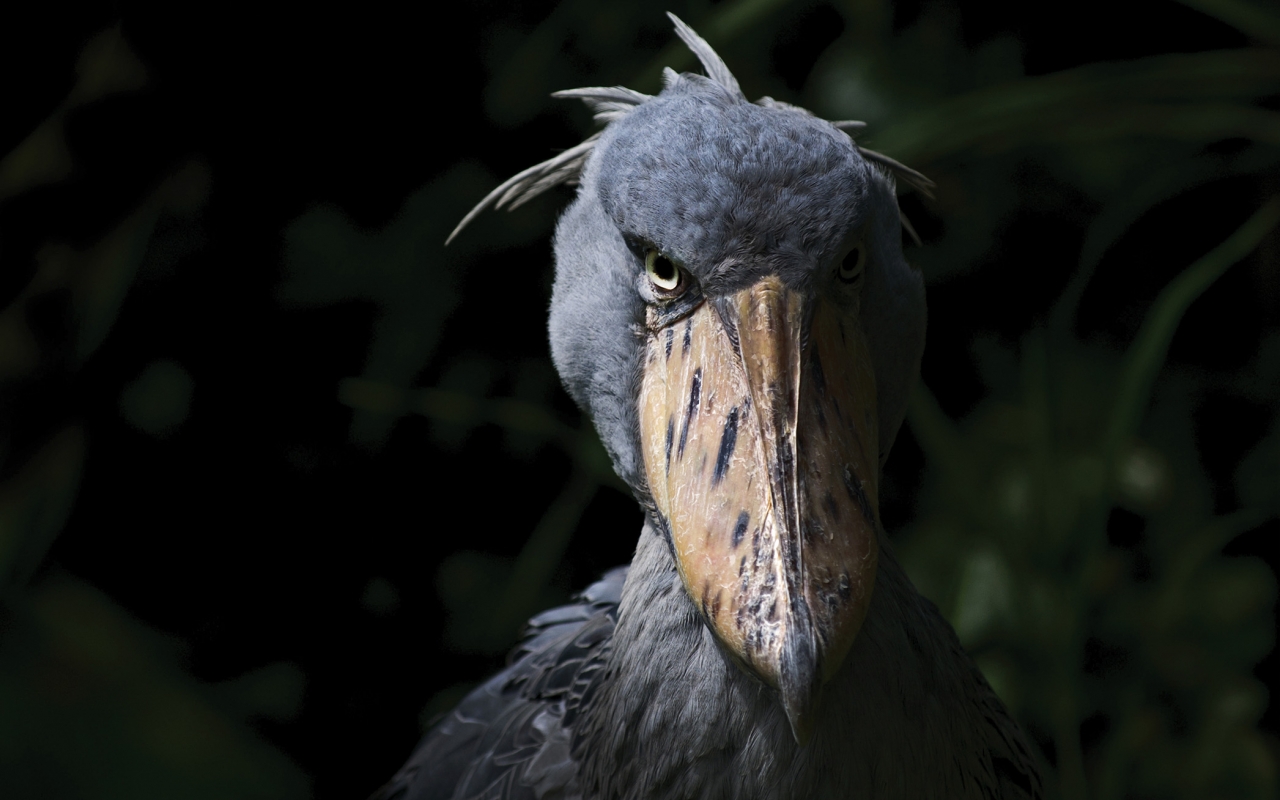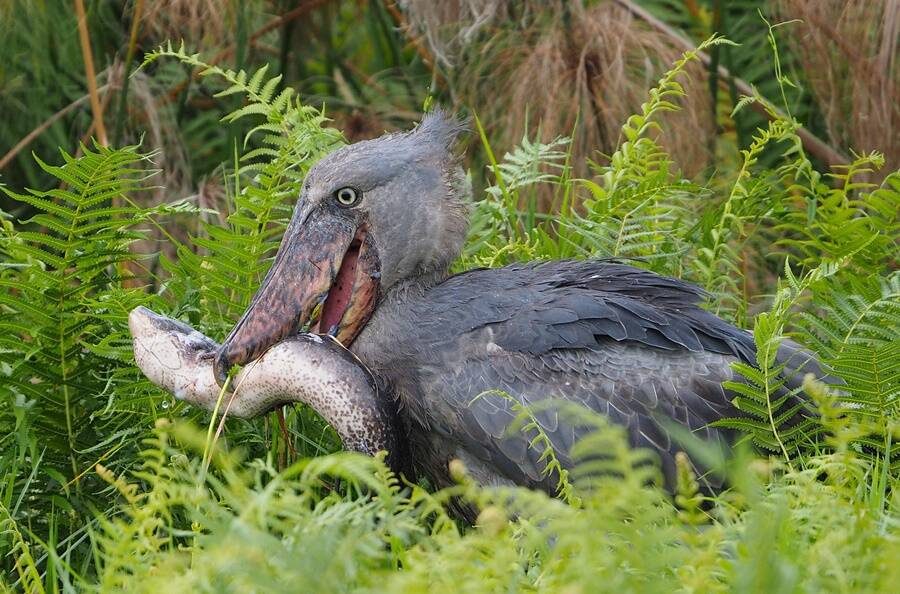Shoebills are large, prehistoric-looking birds which haunt freshwater marshes and swamps in East Africa, thus fondly referred to by many as the “king of the marshes”.
It even snacks on baby crocodiles and Nile monitor lizards.
You probably wouldn’t win a staring contest with it, though you’d be hard pressed to look away. Taller than a mailbox, with an eight-foot wingspan, the shoebill is quite a kick to observe! This hefty bird with its lesson-in-gray plumage is endemic to swamps and wetlands of Central and East Africa. Solitary in nature, even when paired with another, the birds like their space and will feed at opposite ends of their territory.

Shoebills, which live in the swamps of eastern tropical Africa, are after smaller prey. But only slightly smaller. They eat big fish like lungfish, eels, and catfish, and also crazy stuff like Nile monitor lizards, snakes, and baby crocodiles. This bird eats crocodiles!

And they hunt like total bosses of the swamp. The Shoebill will stand there, motionless as a statue, and wait for some poor lungfish or baby crocodile to swim by. Then the bird will pounce forward, all five feet of it, with its massive bill wide open, engulfing its target along with water, mud, vegetation, and probably any other hapless fish minding their own business. Clamping down on its prey, the bird will start to swing its massive head back and forth, tipping out whatever stuff it doesn’t want to eat. When there’s nothing but lungfish or crocodile left, the Shoebill will give it a quick decapitation with the sharp edges of the bill (because of course it does) and swallow away.
Sound terrifying? Yeah, it is. But it’s also impossible not to be impressed by these giants. Shoebills have been a beloved species for a long time. They appear in the artwork of the ancient Egyptians. Arabs reportedly called the bird Abu-Markhub, or “father of a slipper” (just can’t get away from that shoe imagery).
So, anything cool about the bill other than that it’s gigantic, looks like footwear, and can decapitate crocodiles? Sure: It makes awesome machine-gun noises. Shoebills are silent most of the time but engage in “bill-clattering” around the nest or when greeting another bird. It’s loud and scary and the last sound that lots of poor monitor lizards ever hear.

By now we must have hit all the things that are scary about the Shoebill, you must be saying. Sorry, but no. (Why would I even be writing these words if not to lull you into a false sense of terror completion?) Are you ready for it? They crap on their legs. Yep. They crap on their own legs because it keeps them cool. As with other birds, the poop is mostly liquid, and heat from warm blood passing through the legs is used to evaporate the liquid waste, resulting in cooler blood circulating through the stork. The science is fascinating, but when you get right down to it, this already mean-looking bird with a huge, clattering death bill now also has poop legs.
Beastly and terrifying though they are, it would be a real shame to have a world without Shoebills. Young crocodiles would be everywhere! Eels! Monitor lizards! Our children and grandchildren would be overwhelmed. Lungfish, everywhere! Let’s work on appreciating these feathered monsters, and let them do their mud-eating, decapitating thing. But you might not want to look at them too closely. That death stare will haunt you in your dreams.
Reproduction
Shoebills reach maturity at three to four years old, and breeding pairs are monogamous. These birds are very solitary in nature, though, and even mating pairs will feed at opposite sides of their territory. Breeding pairs build nests on water or on floating vegetation, and can be up to eight feet wide. Females lay an average of two eggs at the end of the rainy season.
As co-parents, both birds tend to the eggs and young. This includes incubating and turning eggs, and cooling them with water they bring to the nest in their large bills. Hatching occurs in about a month. Chicks have bluish-gray down covering their bodies and a lighter colored bill. Only one chick typically survives to fledge.
Conservation
The International Union for the Conservation of Nature estimates that there are only between 3,300 and 5,300 adult shoebills left in the world, and the population is going down.
As land is cleared for pasture, habitat loss is a major threat, and sometimes cattle will trample on nests. Agricultural burning and pollution from the oil industry and tanneries also affect their habitats. Shoebills are hunted as food in some places, and in others, they’re hunted because they’re considered a bad omen.






